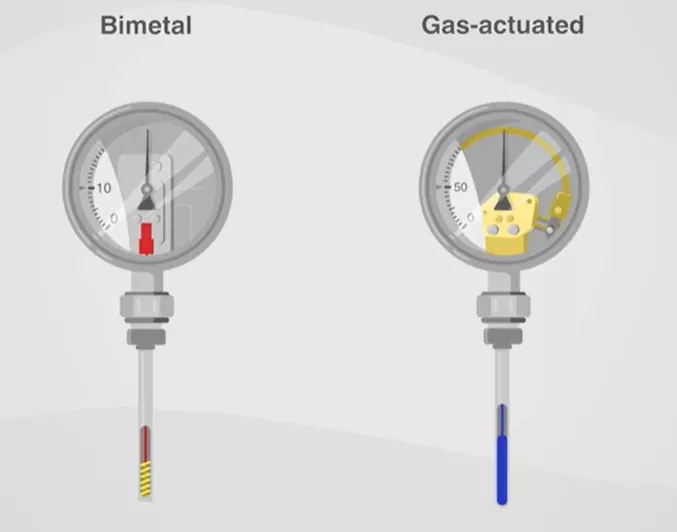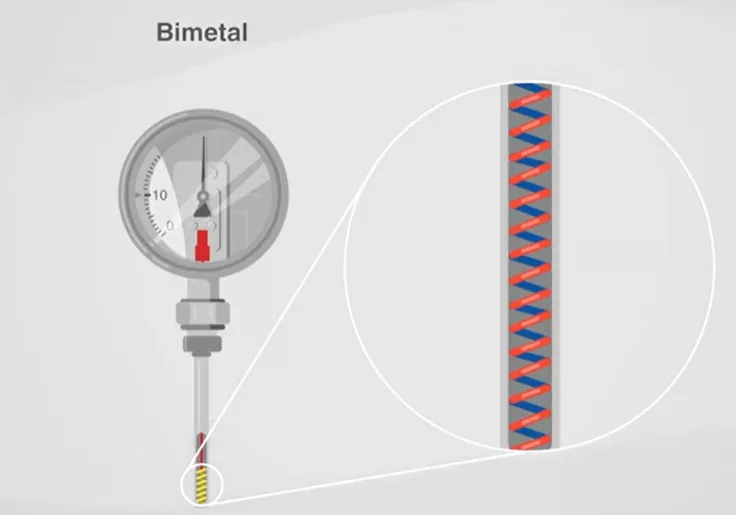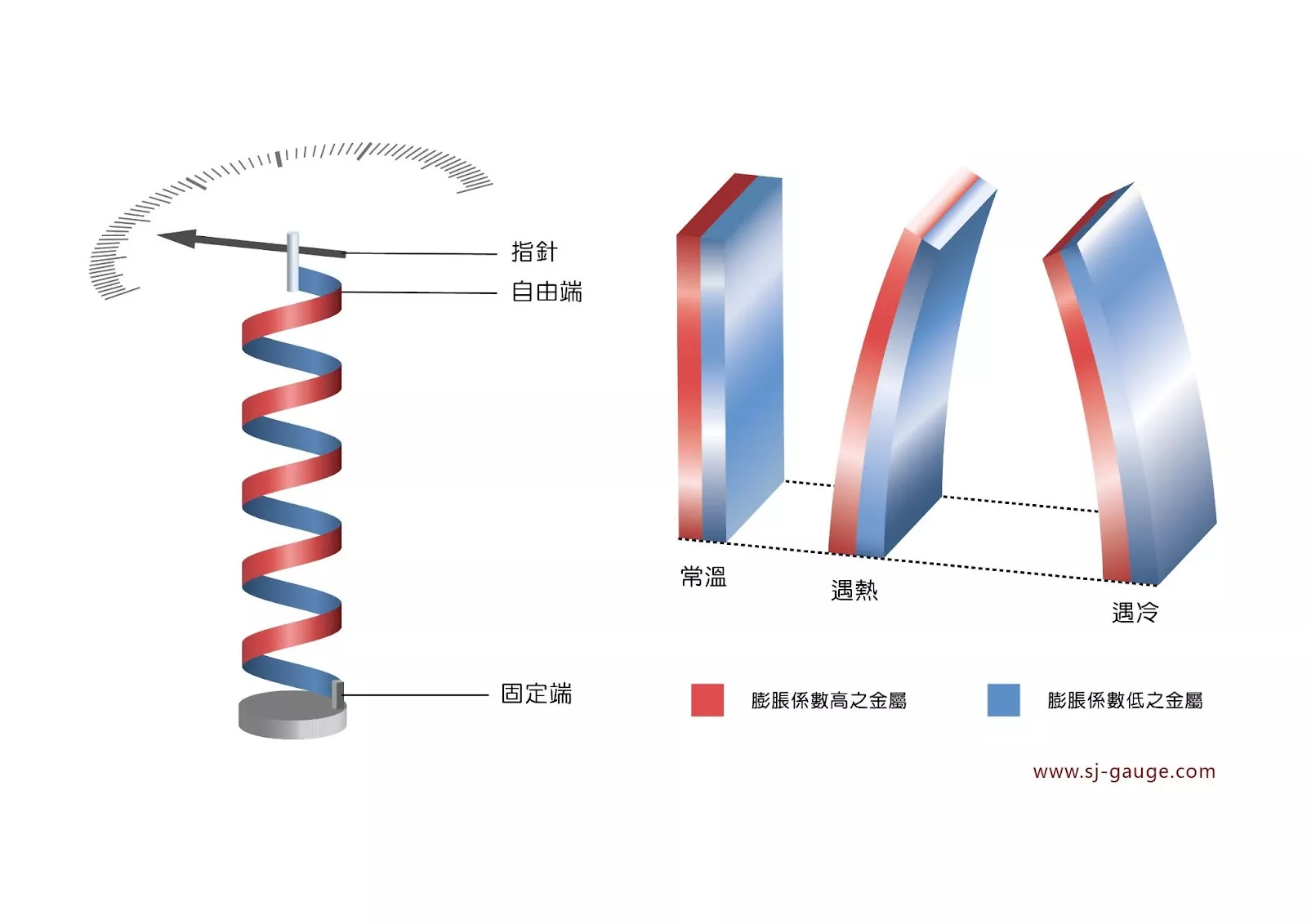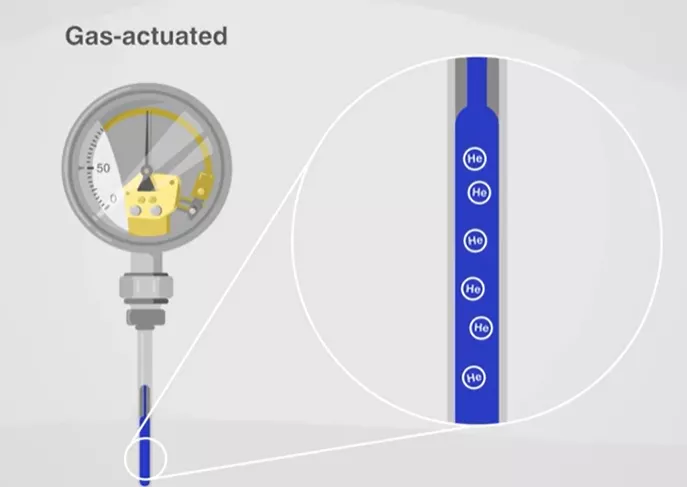There are many types of industrial thermometers. Among them, the common types are bimetallic and gas expansion thermometers. However, some people are often confused about the advantages and disadvantages between these thermometers. So let's look at the differences between these thermometers.

1. Bimetal Thermometer
Bimetal thermometers are made of two different kinds of metal bonded together. Each metal expands at different rates when heated, and by measuring this difference, we can measure temperature. Generally, the metal sheets are made into a coil, with the "free end" connected to the pointer shaft and the "fixed end" where the thermometer will be attached. When the temperature rises, the metal at the free end will rotate in one direction, and when the temperature drops, it rotates to the other direction. When the coil bends, the free end will control the pointer.


Advantages
-
Cost-effective, simple structure
-
The results are not affected by ambient temperature
-
Wide temperature range limit of -70°C ~ 600°C
Disadvantages
-
Longer response time
-
Observer must be close to the measurement point, not in another place
2. Gas Expansion Thermometer
Gas expansion thermometers, also known as gas-actuated thermometers, use the principle of gas expansion to measure temperature. Helium (He) is generally recommended. When the temperature rises, the gas in the thermometer will expand, changing the pressure in the tube. This pressure drives the pointer.

Advantages
-
Short Delay
-
Wide temperature range limit of -200°C ~ 700°C
-
Observer can be farther from the measurement point via a capillary tube(60m) (A-point measurement, B-point observation)
Disadvantages
-
Higher price from a more complex structure to use the gas
-
The result will be affected by ambient temperature
3. Thermometer Comparison Table(Clear in first sight)
|
|
Bimetal Thermometer |
Gas Expansion Thermometer (Gas-actuated Thermometer) |
|
Temperature Range Limit
|
-70°C ~ 600°C |
-200°C ~ 700°C |
|
Ambient Temperature
|
No Effect | Affected |
|
Response Time
|
Slow | Fast |
|
Measurement Distance
|
Measurement can only be made at measurement point |
Enables long-distance temperature measurement (via capillary) |
|
Price
|
Cheaper | Higher |
4. Still unclear? Click the video below or contact us!
Source: https://www.wika.com/en-en/startpage.WIKA
Summary
Each type of thermometer has its own specialization — each with advantages and disadvantages. We help our clients answer the important question: Which one is more suitable to your needs? If you are interested in temperature- or thermometer-related topics, click on Read More.








